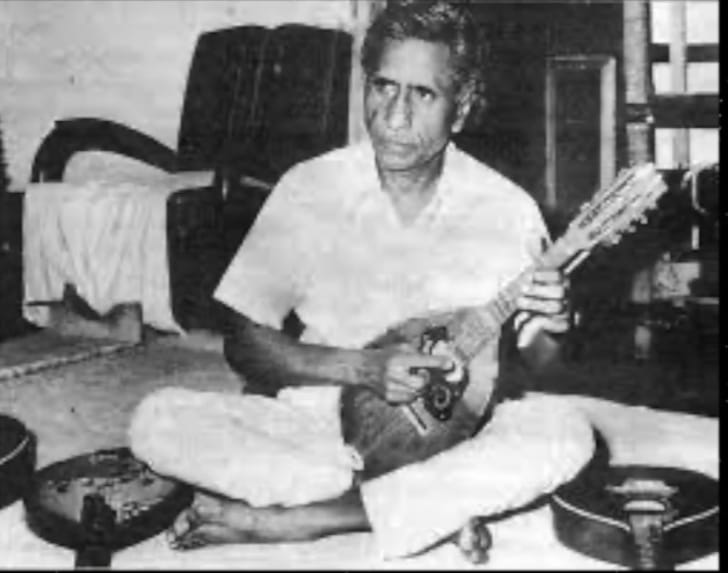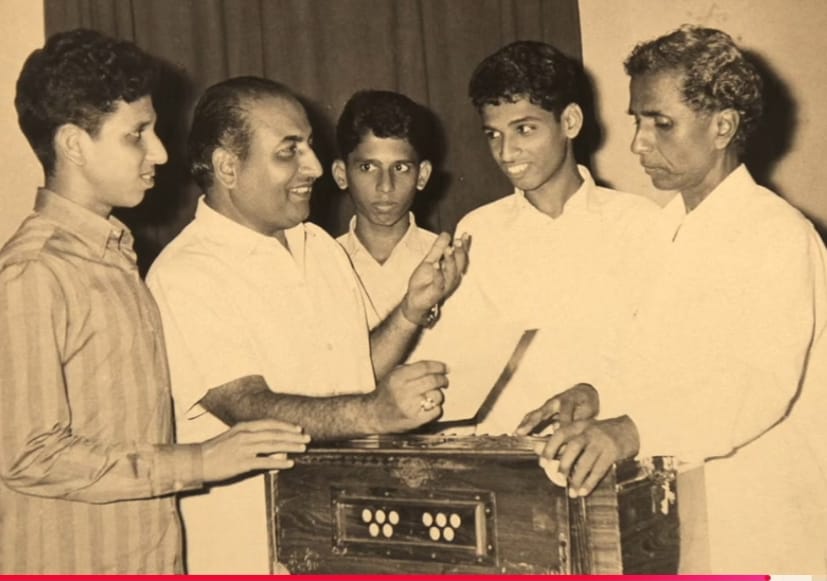
A Melodious Legacy : Remembering Sajjad Hussain on His 30th Death Anniversary
July 21, 2025, marks three decades since the passing of Sajjad Hussain, the enigmatic genius of Hindi cinema’s golden era whose soulful compositions continue to resonate with music lovers. Known as the master of the mandolin, his intricate melodies and unparalleled artistry remain a testament to his brilliance, even if his name has faded into the shadows of time.
The Making of a Maestro
Born on June 15, 1917, in Sitamau, Madhya Pradesh, Sajjad Hussain was destined for musical greatness. His father, Mohammed Amir Khan, introduced him to the sitar, igniting a lifelong passion for music. Sajjad’s prodigious talent extended beyond the sitar to instruments like the veena, violin, flute, and piano. However, it was his mastery of the mandolin—a seemingly simple instrument—that set him apart. With unparalleled finesse, he transformed the mandolin’s staccato “tan-tan-tan” into intricate Hindustani classical taans and meends, a feat that left contemporaries and listeners in awe. As Lata Mangeshkar, his ardent admirer, once remarked, “No one played the mandolin like him.”
Sajjad’s journey to Bombay in 1937 marked the beginning of his cinematic odyssey. Under the mentorship of luminaries like Meer Saheb and Rafiq Ghaznavi at Minerva Movietone and Wadia Movietone, he honed his craft. His early breakthrough came when music director Ali Baksh, impressed by his mandolin virtuosity, appointed him as an assistant. Sajjad’s first foray into composition was for the film Gaali (1944), where his songs “Ab Laagi Pe Laagi Ram” and “Ab Aa Ja Aa Ja Dil Na Lage” showcased his innate ability to blend melody with emotion.
A Symphony of Hits

Sajjad Hussain’s rise to prominence came with his debut as an independent music director in Dost (1944). The film’s soul-stirring tracks, including “Koi Prem Ka De Ke Sandesa,” “Badnaam Mohabbat Kaun Kare,” and “Alam Par Alam Sitam Par Sitam,” became instant classics. However, a bitter fallout with producer Shaukat Hussain Rizvi, who credited the film’s musical success to his wife, Noor Jehan, led Sajjad to vow never to work with her again—a decision reflective of his uncompromising nature.
The 1940s and 1950s were Sajjad’s most prolific years, with unforgettable compositions in films like Dharam (1945), 1857 (1946), Kasam (1947), Rooplekha (1949), Khel (1950), and Magroor (1950). His work in Hulchul (1951) remains a high point, with gems like “Bahaar Aai, Lutaa Dil Meraa Haay Aabaad Ho Kar” and “Preet Jata Ke Meet Bana Ke Bhul Na Jana,” both sung by Lata Mangeshkar, showcasing his ability to craft melodies that were both intricate and accessible.
In 1952, Sajjad composed for Sangdil, a Dilip Kumar starrer, delivering one of his most iconic albums. Songs like “Yeh Hawa, Yeh Raat, Yeh Chandni” by Talat Mahmood and “Dil Mein Sama Gaye Sajan” by Lata Mangeshkar and Talat Mahmood captured the essence of romance with haunting beauty. His later work in Rustam Sohrab (1963) featured the timeless “Yeh Kaisi Ajab Dastaan Ho Gayi Hai” by Suraiya and “Ae Dilruba Dilruba” by Lata Mangeshkar, cementing his legacy as a composer of unparalleled depth.
Sajjad’s influence extended beyond Hindi cinema. In 1959, he composed for the Sri Lankan Sinhala film Daiwa Yogaya, with songs like “Hada Gile Ama Mihire” sung by Rukmani Devi, which remain popular in Sri Lanka to this day.
The Mandolin’s Magic
Sajjad Hussain’s compositions were marked by their complexity and emotional resonance. His love for Arabic music influenced his style, evident in the feather-light notes he demanded from his singers. Lata Mangeshkar, who considered him her favorite composer, recalled his meticulous approach: “Sajjad Sahab disliked loud alaaps. He would sing himself to show us how to deliver notes with subtlety.” His ability to extract nuanced performances from vocalists like Lata, Talat Mahmood, and Suraiya elevated his songs to timeless treasures.
The mandolin, an instrument rarely associated with Hindustani classical music, became his signature. Lata Mangeshkar marveled at his ability to coax intricate taans and meends from it, saying, “You will not believe there is little one can do with the mandolin… but Sajjad Sahab made it sing.” Despite her encouragement to perform publicly with the instrument, Sajjad demurred, citing a lack of practice—a glimpse into his humility beneath his fiery exterior.
A Tempered Genius
Sajjad Hussain’s brilliance was matched by his tempestuous personality, which often overshadowed his contributions. Known for his bluntness, he clashed with industry giants, including lyricist D.N. Madhok, actor Dilip Kumar, and composers like Naushad. His sharp critiques—calling Talat Mahmood “Galat Mahmood” and Kishore Kumar “Shor Kumar”—reflected his uncompromising standards. He rejected offers from luminaries like Shashadhar Mukherji and K. Asif, the latter for Mughal-e-Azam, due to creative differences. Even his brief fallout with Lata Mangeshkar, later resolved, underscored his complex relationships.
This fiery temperament limited his output, with only a handful of films to his credit compared to contemporaries like Naushad or S.D. Burman. Yet, his peers held him in high regard. Anil Biswas and Naushad spoke of him with respect, and Madan Mohan famously admitted to drawing inspiration from Sajjad’s “Yeh Hawa, Yeh Raat” for his own “Tujhe Kya Sunaun Mein Dilruba.”
A Quiet Farewell
Sajjad Hussain’s later years were marked by obscurity. His last films, Mera Shikaar (1973) and Aakhri Sajda (1977), failed to revive his career. On July 21, 1995, he passed away quietly, with only a few, including composers Khayyam and Pankaj Udhas, attending his funeral. Survived by his daughter and five sons—Mustafa, Yusuf, Noor Mohammad, Nasir Ahmad, and Abdul Karim—Sajjad left behind a legacy that, though underappreciated, remains indelible.
A Timeless Legacy
On his 30th death anniversary, it is time to celebrate Sajjad Hussain’s contributions to Indian music. His ability to weave intricate melodies, his mastery of the mandolin, and his uncompromising pursuit of perfection set him apart as a true artist. Songs like “Yeh Kaisi Ajab Dastaan Ho Gayi Hai,” “Phir Tumhari Yaad Aayi Ae Sanam,” and “Ae Dilruba Dilruba” continue to evoke nostalgia and admiration. His influence can be heard in the works of later composers, and his compositions remain a treasure trove for music aficionados.
Sajjad Hussain’s life reminds us that genius often comes with quirks. His temper may have limited his filmography, but it never dimmed his brilliance. As we honour this unsung maestro, let us revisit his melodies, which continue to whisper tales of love, longing, and artistry through the ages.
Hasnain Naqvi is a former member of the history faculty at St. Xavier’s College, Mumbai





